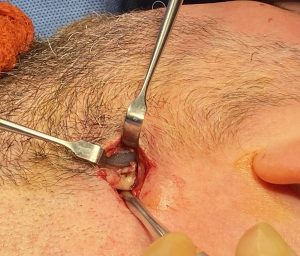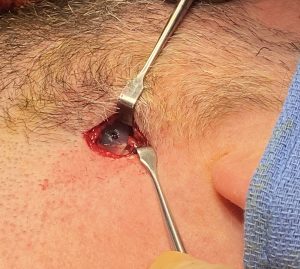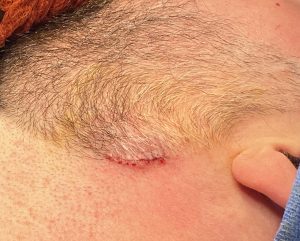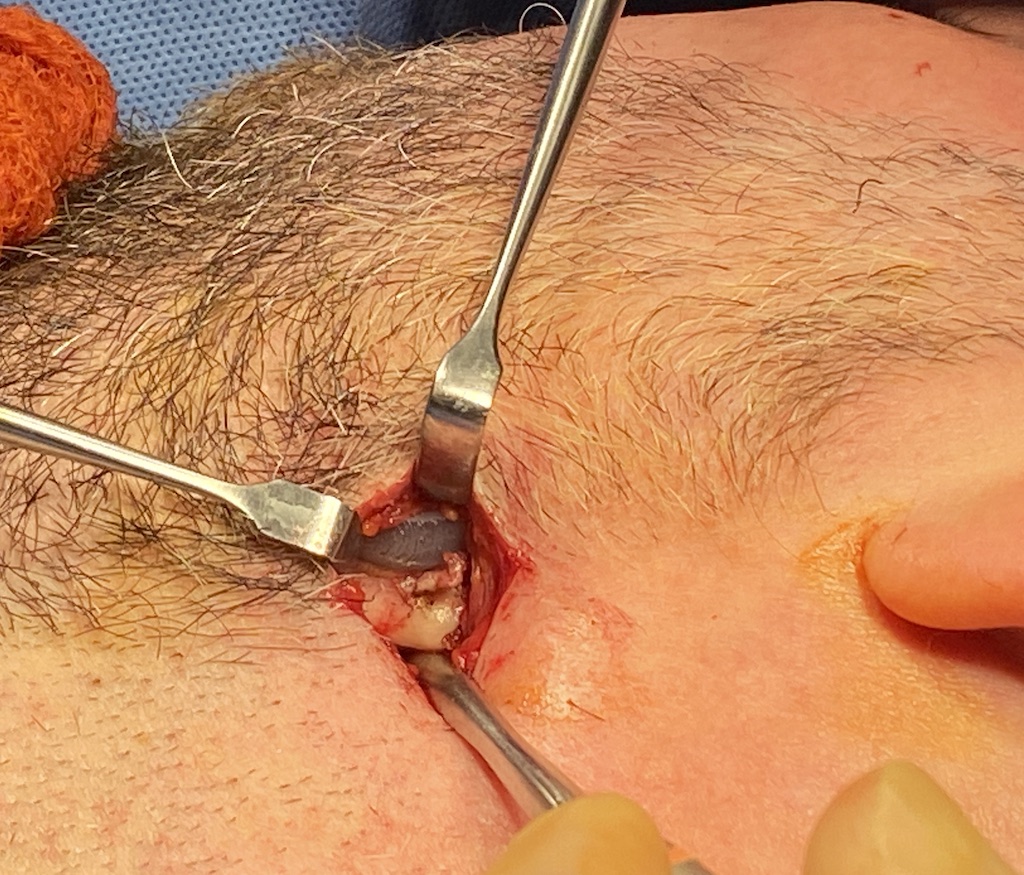In jaw angle and custom jawline implants the most challenging part of the surgery is to get the implants properly positioned over the bone. Between the limited visual access of the intraoral incisional approach and the ligamentous attachments of the masseter muscles it is not as easy as it may seem to get implant positioning over the jaw angles particularly if the implant needs to create some vertical lengthening. This is further complicated as it is also a bilateral procedure and the need to have symmetrical implant positioning of two sides.
When jaw angle implant asymmetry occurs the logical approach to revisional repositioning is to perform it back through how the implamt was originally placed. (intraoral) And while this can be successful there are circumstances where the intraoral approach may be limited or not the best way to attempt it. These situations would be when previous revisions have not been successful, significant vertical implant lowering is needed, a previous history of infection has occurred or patient preference.
The alternative approach to intraoral jaw angle implant repositioning is the transcutaneous or external method. Coming from the outside allows direct visualization of the bone-implant relationship, allows for screw fixation directly to the angle and and lowers the risk of postoperative infection.



In difficult or refractory jaw angle implant repositioning cases direct access to the working end of the implant provides the best visual assessment of the implant-bone relationship. While the external scar is always a concern its small size and location in the beard skin makes that less an issue than one would think.
Dr. Barry Eppley
World-Renowned Plastic Surgeon



